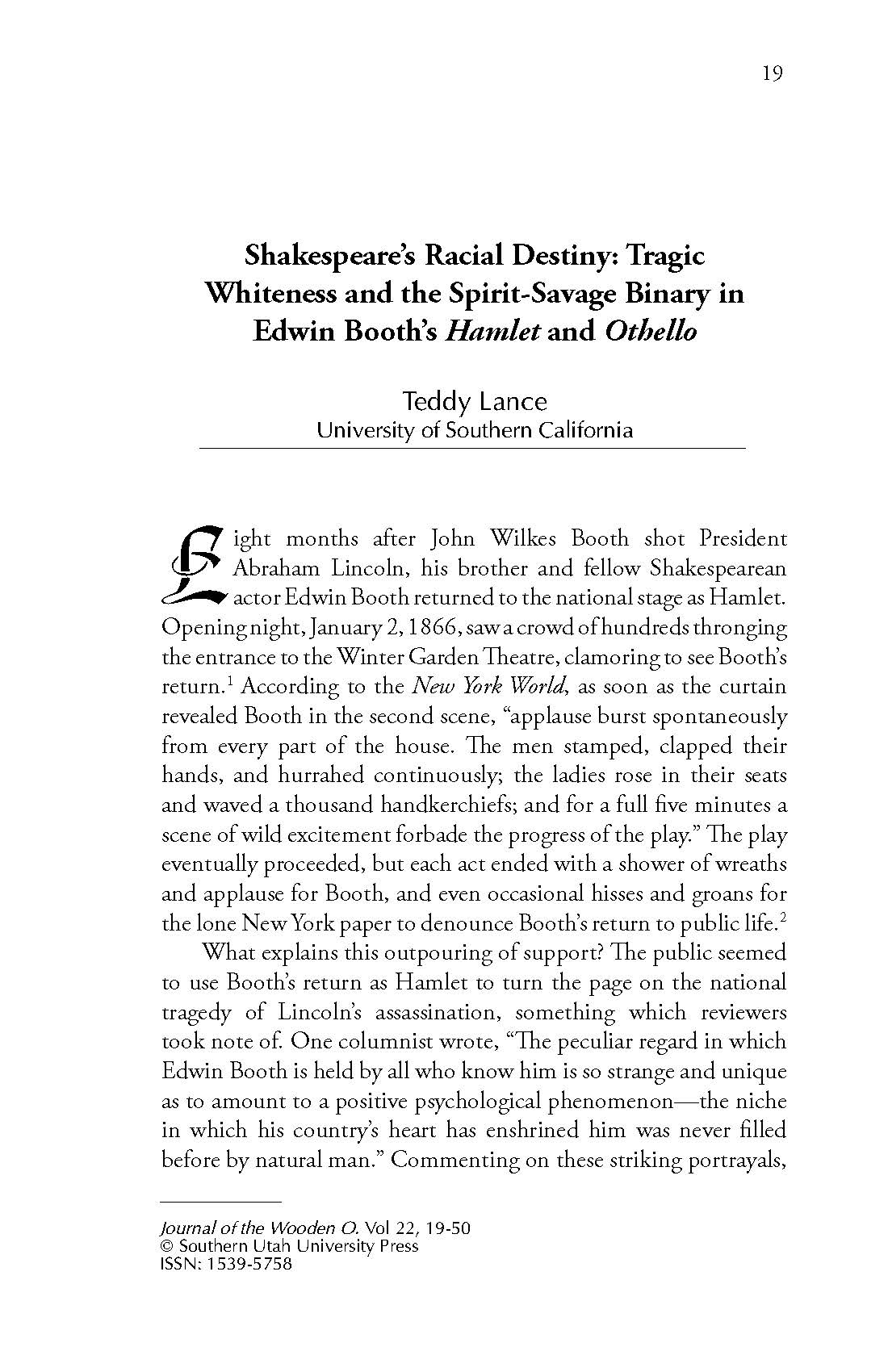Shakespeare's Racial Destiny Tragic Whiteness and the Spirit-Savage Binary in Edwin Booth's Hamlet and Othello
Main Article Content
Abstract
Eight months after John Wilkes Booth shot President Abraham Lincoln, his brother and fellow Shakespearean actor Edwin Booth returned to the national stage as Hamlet. Opening night, January 2, 1866, saw a crowd of hundreds thronging the entrance to the Winter Garden Theatre, clamoring to see Booth’s return.1 According to the New York World, as soon as the curtain revealed Booth in the second scene, “applause burst spontaneously from every part of the house. The men stamped, clapped their hands, and hurrahed continuously; the ladies rose in their seats and waved a thousand handkerchiefs; and for a full five minutes a scene of wild excitement forbade the progress of the play.” The play eventually proceeded, but each act ended with a shower of wreaths and applause for Booth, and even occasional hisses and groans for the lone New York paper to denounce Booth’s return to public life.2
